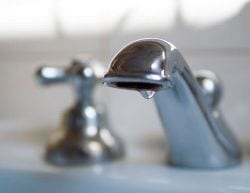Access to improved drinking water and sanitation varies widely within individual countries in sub-Saharan Africa. To achieve universal coverage of access to improved drinking-water sources and sanitation, strategies that target the areas with the lowest coverage are essential.
This is according to new research carried out by the London School of Hygiene & Tropical Medicine which identifies important geographic inequalities. Researchers based their findings on data on reported household use of an improved drinking water supply, improved sanitation facilities, and open defecation from 138 national household surveys undertaken between 1991 and 2012 in 41 countries in sub-Saharan Africa. Lead author of the study, published in PLOS Medicine, Dr Rachel Pullan, said, “We have revealed substantial levels of inequality in contemporary access to both improved drinking-water supplies and sanitation and open defecation within countries, and have shown how mapping the geographical distribution of drinking-water supply and sanitation at policy relevant scales can help to make visible those deprived subgroups that were previously hidden within national statistics.” The study estimates that coverage of improved drinking water supply varied from as low as 3.2% in some districts of Somalia to as high as 99% in urban populations in Namibia. Access to improved sanitation ranged from 0.2% in parts of Chad to close to 100% in Gambia.Using statistical models, the authors estimate that rural households in the districts with the lowest levels of access within a country were 1.5 to 8 times less likely to use improved drinking water, 2 to 18 times less likely to use improved sanitation, and 2 to 80 times more likely to defecate in the open, than those rural households in districts with the best coverage.
The authors believe their findings confirm that strategies that target the areas with the lowest coverage are essential to achieve universal coverage of access to improved drinking-water sources and sanitation. (Source: The Chariot LSHTM News)







